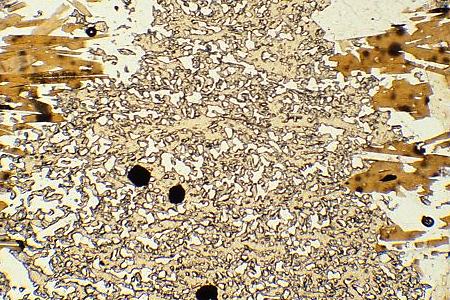
This specimen comes from the southern margin of the Central zone of the Damara belt, Namibia, where the microstructures and metamorphic setting are broadly similar to the Buchan region of the Dalradian of Scotland. The criteria for determining growth sequences were illustrated using this rock.
The mineral assemblage is And + Sil + St + Bt + Ms + Qtz (+ Pl). Staurolite and andalusite form large poikiloblasts, and fibrolitic sillimanite forms knots and small nodules.
The rock appears to preserve a reaction in progress, in which staurolite breaks down and Al-silicate grows. It can probably be balanced overall as St + Ms + Qtz = Al-silicate + Bt + H2O. However, the mechanism involves local reactions in the manner described by Carmichael (1969), and muscovite is a local product of staurolite breakdown. Although sillimanite was probably the stable Al-silicate at the time of staurolite breakdown, there is no evidence for the polymorphic transition And => Sil. This is possibly an illustration of metastable behaviour controlled by overstepping: the dehydration reaction has a high entropy change and runs at a relatively small overstep; the polymorphic transition requires considerably greater overstep to drive it.

Staurolite poikiloblasts pseudomorph a pre-existing mica fabric, which is
parallel to the external schistosity.
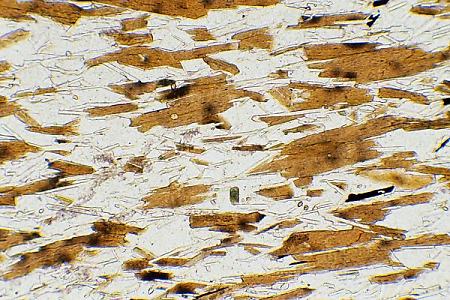
Detail of the matrix fabric. Away from the poikiloblasts the mica grain size
and distribution is quite similar to that of the fabric preserved in staurolite.
There has been little matrix coarsening since staurolite growth.
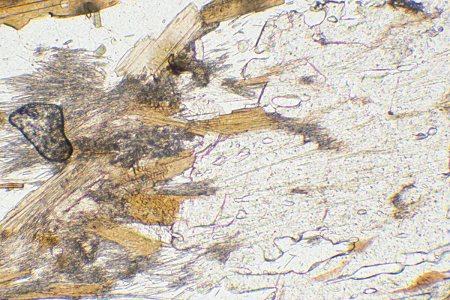
Detail of the edge of an andalusite poikiloblast against matrix quartz,
biotite and sillimanite. The timing relationships of the Al-silicates are
ambiguous.
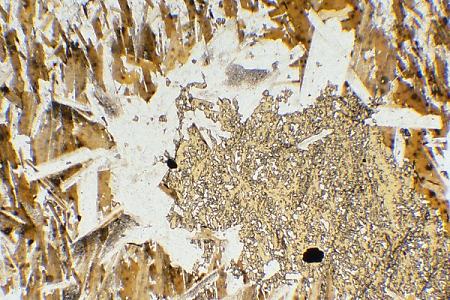
Staurolite, partly pseudomorphed around its margins by random flakes of
muscovite.
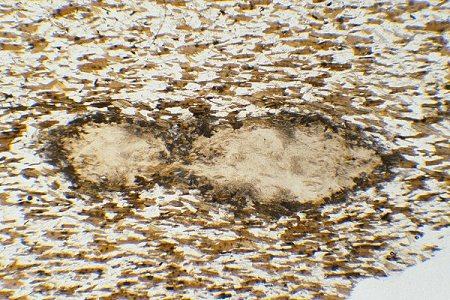
Sillimanite nodules in the rock matrix, well removed from staurolite.